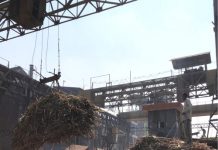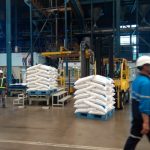Less Sugarcane, More Uncertainties
The sugar futures market in NY closed out Friday with the contract for October/2021 at 19.58 cents per pound, a slight 9-point drop (two dollars per ton) against the previous week. The funds liquidated 12,000 lots, but they are still long 238,755.
From July 31st up to Friday’s closing, the average increase of the prices for the contracts of the 2021/2022 crop was 39 dollars per ton while the appreciation for 2022/2023 was 52 dollars per ton. The market sped up the 2022/2023 hedging within a month, reflecting the concern over the next crop in view of the performance way below the expected for this current crop because of the harsh weather.
A lot is said about “sudden death” for the sugarcane crushing, a situation where the crushing stops because there is no available cane in the fields anymore. A crop of 520 million tons of sugarcane doesn’t seem to be scary anymore. Those who stuck with the hedge policy fixing prices for 2022/2023 in real per ton and buying out-of-the-money calls, 150 points above, are doing well, because in late July the average price was at 16.25 cents per pound and on Friday the average was at 19 cents per pound!!! That’s 275 points of gain.
As for the spreads, March/May 2022, which was trading almost 100 points of discount in late July (too much in our view) narrowed down to 60. That’s why we always insist on the individual analysis of the spreads because distortions will come up and must be used. May/2022 was trading at an annualized discount of 27.5% late July against March/2022. That means you can sell/deliver your sugar in March and get it back 27.5% cheaper per year in May. Those who took advantage of the huge distortion pocketed almost 9 dollars per ton.
Another thing that stands out in this short analysis between two periods is that the carry from October/21 to March/22 has increased from 7.2% to 9% per year. In other words, those holding long positions in October/2021 want to get rid of the sugar. What can explain this movement if everybody is talking about less sugarcane for this year and next year?
Some hypotheses are being contemplated:
a) trading companies have a tight cash flow due to the margin calls; after all, the market has appreciated a lot over the last months. Rolling over the position – with the mills accepting to postpone the delivery – until the following months provide more financial breathing space;
b) trading companies assume that over this period they can get smaller freight, because current freight prices in the spot make the operation margin disappear.
It takes a lot of creativity to create a position in a scenario of huge uncertainties and that also opens the perspective of less sugarcane, less ethanol, consumption recovery and elections in Brazil next year. As this executive said, “The crop will end earlier and the next one will start later”. The variation of the average prices from May/2022 to March/2023 over the period above mentioned shows exactly that. It’s worth sticking to the basics, which is fixing prices and buying OTM calls, also known as a synthetic put.
The consumption of Otto cycle fuels is gradually recovering: compared to July last year, the total consumption has gone up 8.65%; it went up 10.69% in equivalent gas. The total consumption from January to July this year topped the same period of 2020 by 6.59% (29.9 billion liters against 31.9% billion liters); it went up 7.25% in equivalent gas. Now over the last 12 months it has increased 2.16%, equivalent to 1.08 billion liters.
Brazilian sugar exports add up to 31.5 million tons (from August/2020 to July/2021). Brazil exported an additional volume of 8.5 million tons of sugar over this period. There was a 37.1% increase against the same period last year.
Our survey about mills’ price fixing for the current crop (2021/2022), as you know, reached more than 85% with the average price of R$1,649 per ton, collected from January/2020 to February/2021, when we stopped monitoring this crop. This value adjusted to August 31 by CDI represents R$1,912 per ton. We started adjusting these values by CDI so that we can have a more accurate comparison.
Vibra Energia, new name for BR Distribuidora, and Copersucar created a joint-venture for marketing ethanol. On one side, the fuel distributor trades 6.5 billion liters of ethanol; on the other, the mills connected to the co-op produce 5.0 billion liters. Although the new company still depends on the approval of the CADE (Administrative Council for Economic Defense), the two entities scored a “screamer goal” strategically speaking, showing that there is no room on the market for those who think small. The sector won’t grow by selling straight to the gas station on the corner, but it will with modern approaches going for scale gain, increase in capillarity and synergy between the operations.
So that there are no doubts or the name of the agribusiness is used as a sponsor of the anti-republican adventures of the tenant of the Presidential Palace in Brasilia, the ABAG (Brazilian Agribusiness Association) through its Council President, Marcello Brito, didn’t chicken out like other entities and published a seriously worded manifesto against the government policy and the crisis of the three branches of government. Brito acknowledges that the sector was too condescending with a government that hasn’t delivered on its promises. “It’s high time the adults were brought into the room”, he commented referring to the endless crises caused by the delirious federal president.
The demonstrations expected to happen on September 7 (Brazilian Independence holiday), clearly aiming to confront the institutions, bring huge concern to great part of the entrepreneurial elite, which little by little is abandoning the government and avidly looking for a third way. The concern has also affected the USA, which has alerted its American citizens who live in Brazil.
Monday is a holiday in the USA and Tuesday is a holiday in Brazil. Therefore, we can expect next week to be smooth and hassle-free. Enjoy your weekend!
Click here to read Episode 1
Click here to read Episode 2
Click here to read Episode 3
Click here to read Episode 4
Click here to read Episode 5
Click here to read Episode 6
Click here to read Episode 7
Click here to read Episode 8
Click here to read Episode 9
Click here to read Episode 10
Click here to read Episode 11
Click here to read Episode 12
Click here to read Episode 13
Click here to read Episode 14
Mr. Arnaldo Luiz Correa is the Director at Archer Consulting. He is a Risk Manager with an experience of almost 30 years in the agriculture commodities market.
To get in touch with Mr. Arnaldo, write on arnaldo@archerconsulting.com.br












